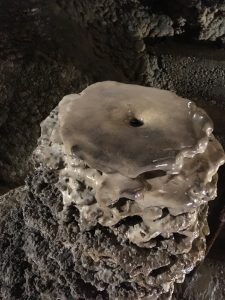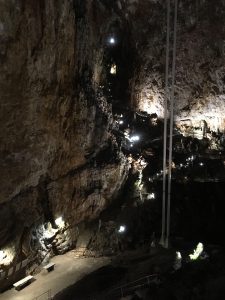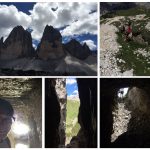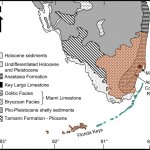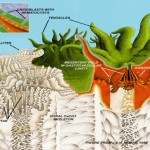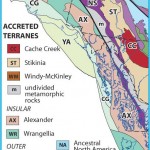With a central cavern measuring 350 by 215 by 430 ft, the 10 million year old Grotta Gigante in northeastern Italy is the second largest cave in the world open to tourists. The 10 million year old cave was first explored in 1840 by a spelunker hoping to find a water source at its bottom, but, alas, the river that carved the cave had left it 3 million years prior! The elusive "disappearing" Timavo River enters the ground near the mountains and exits near the sea, its underground course through the carbonates of the Karst Plateau still largely a mystery.
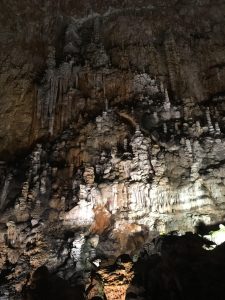
A cavern wall in Grotta Gigante, with stalctites at the top and stalagtites on the bottom. Red and white carbonate colors displayed.
Around two-thirds of the water in the Timavo stems from infiltration of precipitation through the carbonate rocks, to which the Grotta Gigante's magnificent speleothems testify. The water becomes acidic as it travels through the soil, so it dissolves carbonate minerals and carries them in solution; as the water falls into the cave, the carbonates can crystallize out. Studies in the cave show that its towering stalagmites, platy in shape due to their formation from the splashing of falling water drops, grow upwards from the ground at about 1 mm every 20 years. The stalactites, which hang from the ceiling, sport a more circular appearance as raindrops swirl down and around them. Although the limestone is originally white, the water, carrying iron leached from clay above, adds a red color.
The cave's size, constant temperature, and relative isolation from outside noise sources make it ideal for certain scientific instruments. It hosts two 330 ft pendula, thought to be the longest in the world, that measure the tiniest movements--fractions of a millimeter--of Earth's crust that result from solar and lunar tides and snow loads.
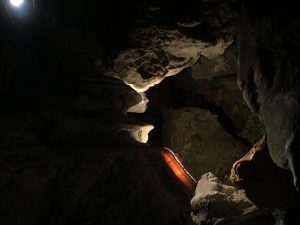
A Grotta Gigante "drape" illuminated from behind. Also shown is green vegetation thriving from the artificial lights. The lights have to be turned off each night and a special UV turned on to kill the unnatural growth, brought in part on visitor's shoes and clothes, which would otherwise quickly overtake the cave.
Additional Reading

